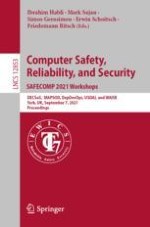This book constitutes the proceedings of the Workshops held in conjunction with SAFECOMP 2021, the 40th International Conference on Computer Safety, Reliability and Security, which took place in York, UK, in September 2021.
The 26 regular papers included in this volume were carefully reviewed and selected from 34 submissions. The workshops included in this volume are:
DECSoS 2021: 16th Workshop on Dependable Smart Embedded and Cyber-Physical Systems and Systems-of-SystemsWAISE 2021: Fourth International Workshop on Artificial Intelligence Safety EngineeringDepDevOps 2021: Second International Workshop on Dependable Development-Operation Continuum Methods for Dependable Cyber-Physical SystemsUSDAI 2021: Second International Workshop on Underpinnings for Safe Distributed AI MAPSOD 2021: First International Workshop on Multi-concern Assurance Practices in Software Design
